by Claire Dill
Nymph
Nymph
Bilbo
Bees on the wild blackberry blossoms.
Russian Olives in bloom.
Double rainbow!
Lia enjoying the ditch on a hot day.
Summer sunrise.
Haying!
Happenings on the farm, news, and food for thought!
by Claire Dill

Nymph

Nymph

Bilbo

Bees on the wild blackberry blossoms.

Russian Olives in bloom.

Double rainbow!

Lia enjoying the ditch on a hot day.

Summer sunrise.

Haying!


Saint John’s Brown Swiss cows grazing on fresh Spring pasture.
by Claire Dill
We have Brown Swiss cows. My grandparents had Holsteins with a few Jerseys and the odd Brahma, but when we moved, my dad, (Claire writing) wanted to transition to Brown Swiss. So we bought Napoleon, a purebred Brown Swiss bull, in 2001, and began the years long journey of changing the herd from black and white Holsteins to the Brown Swiss.
Generations later, and half a dozen purebred Brown Swiss bulls, (Major, Galileo, Sitting Bull, Monarch, Banner, Icarus, and now Maximus :) ), our herd is Swiss. Not registered, but pretty well full Swiss.
In 2017, Banner was giving us some trouble with attitude, so we sent him to the butcher and borrowed a friends' Angus bull (Pumpkin) to finish out the season. Then we decided to try another beef breed, the Red Devon, for a couple of years. My brothers named him "Red Bull". :) He was a decent bull, but his kids were wild and rangeminded and not very impressive. Even though we handled the calves the same, and the moms were the same Swiss, the red calves were really different, just from their daddy's genetics!
When we went back to having a Swiss bull, it was absolutely great, and also really interesting to see the calves again exhibiting the typical Swiss gentleness and amiability. (Funny sidenote on the curiousness of genetics, of "nature versus nurture" and how much temperament the daddy can contribute; where, with animals, the daddy doesn't raise the kids. Here, the moms didn't change, and the handling of the calves didn't change, but just simply changing the daddy from Brown Swiss to the beef bulls, gave consistently rangeminded calves. !)
We like the Brown Swiss because of their temperaments, dual ability for milk and beef, and milk quality and taste.
Their temperament as a breed is "phlegmatic", laid back, mellow, thoughtful, gentle, curious, calm, and reasonable.
There's plenty of individuality in the herd, but as a broad brush description, this is the expectable norm.
They are good mothers, but also in general happy to have people around and are good for working with the cows and calves.
Some bovine breeds are focused on beef, and some on milk production, the Swiss are quite balanced. They give lots of milk (often 7 or 8 gallons per milking at their peak), but they also put on muscle and weight well for the beef side of things.
And they are bred to thrive on pasture, and do not have to be fed grain to reach peak condition for butchering.
Their milk is one of the best in the world for cheesemaking, with a very balanced fat/protein content, and a good amount of butterfat for cream.
The American Brown Swiss is descended from the Braunvieh from Switzerland. Documents dating from the late fourteenth century at the Benedictine Monastery of Einsiedeln in the Swiss canton of Schwyz in Central Switzerland record the export of grey-brown mountain cows from medieval bloodlines to Vorarlberg, now part of Austria.
The first known herd book for a cattle breed was the one kept at the monastery for the Braunvieh from 1775 to 1782. Most dairy historians agree that Braunvieh cattle are the oldest of all dairy breeds.
Braunvieh were imported to the United States in the 1860s and while American breeders generally focus on milk production, some of the draft and beef strengths do remain.
Also, many Brown Swiss have the A2A2 genes, producing A2 beta casein protein in their milk. This is the same beta casein as human milk, and sheep and goat milk, making A2A2 milk apparently easier for many people to digest than A1A1 milk.
Dairy breeds from Northern Europe tend to have more of the A1A1 genes, and are bred for large volumes of production. This has been popular with many modern dairy farmers, but may have contributed to the high rate of dairy allergies/reactions today.

by Courtney Meyerhofer
Is grass fed butter healthy?
Butter has been demonized the last few decades, but it’s coming back into vogue as more people are adopting a whole foods, ancestral approach to nutrition.
100 years ago, Americans ate 18 pounds of butter per person per year!
Today, Americans eat about 5 pounds of butter per person per year.
People then didn’t have the chronic disease epidemic we have today, and they didn’t worry about their butter consumption.
Grass fed butter is high in trace minerals.
Iodine
Calcium
Phosphorous
Magnesium
Iron
Selenium
Modern diets are generally low in these minerals because of soil depletion AND we use more of these minerals due to our higher stress pace of life. This means we need all the minerals we can get.
2. Grass fed butter is high in fat soluble vitamins A D E and K.
Fat soluble vitamins are needed for every cell, every hormone and are linked to longevity. Vitamin E is a powerful antioxidant that helps our bodies handle inflammation and stress.
3. Anti-cancer conjugated linoleic acid (CLA) is uniquely rich in the products of grass fed ruminants.
You can find CLA in grass fed meat, grass fed dairy and butter.
4. Grass fed butter is high in butyric acid, a powerful anti-inflammatory hard to find in most foods.

Mum grooming Sunflower while Aciano nurses.
by Claire Dill



Another farm sunrise

Aciano

Foxtail against the red barn. :)

Bertha, Betsey, and Billie Jo.

Kittens :)

On a hot day, the pigs sit in their food bowl...

by Courtney Meyerhofer
One of the best things about milk is….cheese.
As the weather warms up, it’s the perfect time to make cool, creamy cheese that you can eat with anything.
Anyone with a pot, some milk, and vinegar or cultures can make their own soft cheese.
Unlike hard cheese like cheddar and gouda, soft cheese is ready straight away without any drying or aging.
Cottage cheese. Cream cheese. Fromage blanc. Mascarpone.
All of these are soft cheeses that are delicious on eggs, on pizza, with fruit, or spread on toast.
Soft cheese is simple and decidedly un-fussy. Here are some tips for success.
Don’t Skip the Warm-Up
Warming up the milk before adding cultures sets you up for cheesemaking success because a little heat makes the good bacteria thrive.
Set a timer
Cheese has to follow a timeline, and it’s different for each culture and cheese type. Make sure to plan ahead so you can strain the cheese after the specified time.
Good cheese cannot be rushed!
Get the Cultures
Cottage cheese is easily made with just milk and vinegar, but anything else requires the assistance of helpful, friendly bacteria to culture.
Tried and true Cheese Cultures:
New England Cheesemaking Company – I like the soft cheese sample pack
If you want to try homemade cheese without the cultures, try our fool-proof 2-ingredient cottage cheese recipe.
If you’re ready for local, grass fed raw A2 milk, we’ve got you covered.
Check out the details of our Raw Milk co-op.

Hoof trimming with JJ. Mark Mourton is the best trimmer, quick, careful, fun to work with and absolutely amazing with the cows. He's firm and fast and takes no nonsense, but he's also thoughtful and kind and doesn't mind when the cows are confused or grumpy or don't cooperate at first. If you need a trimmer, I highly recommend him!!!
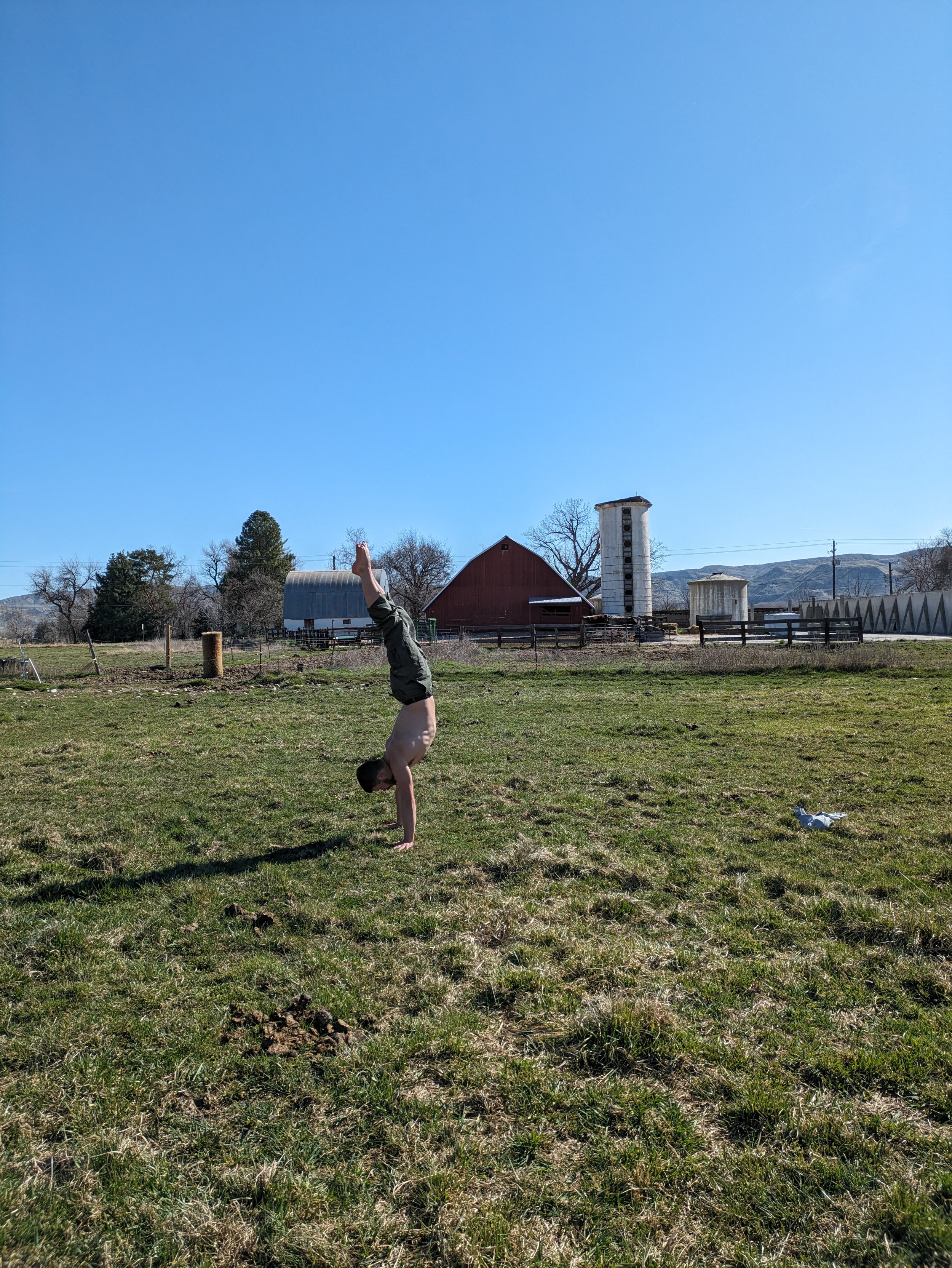
JJ doing handstands in the spring warmth.

JJ and Dad going to get beef out of the big freezer... JJ in coat and hat and bare feet... :)
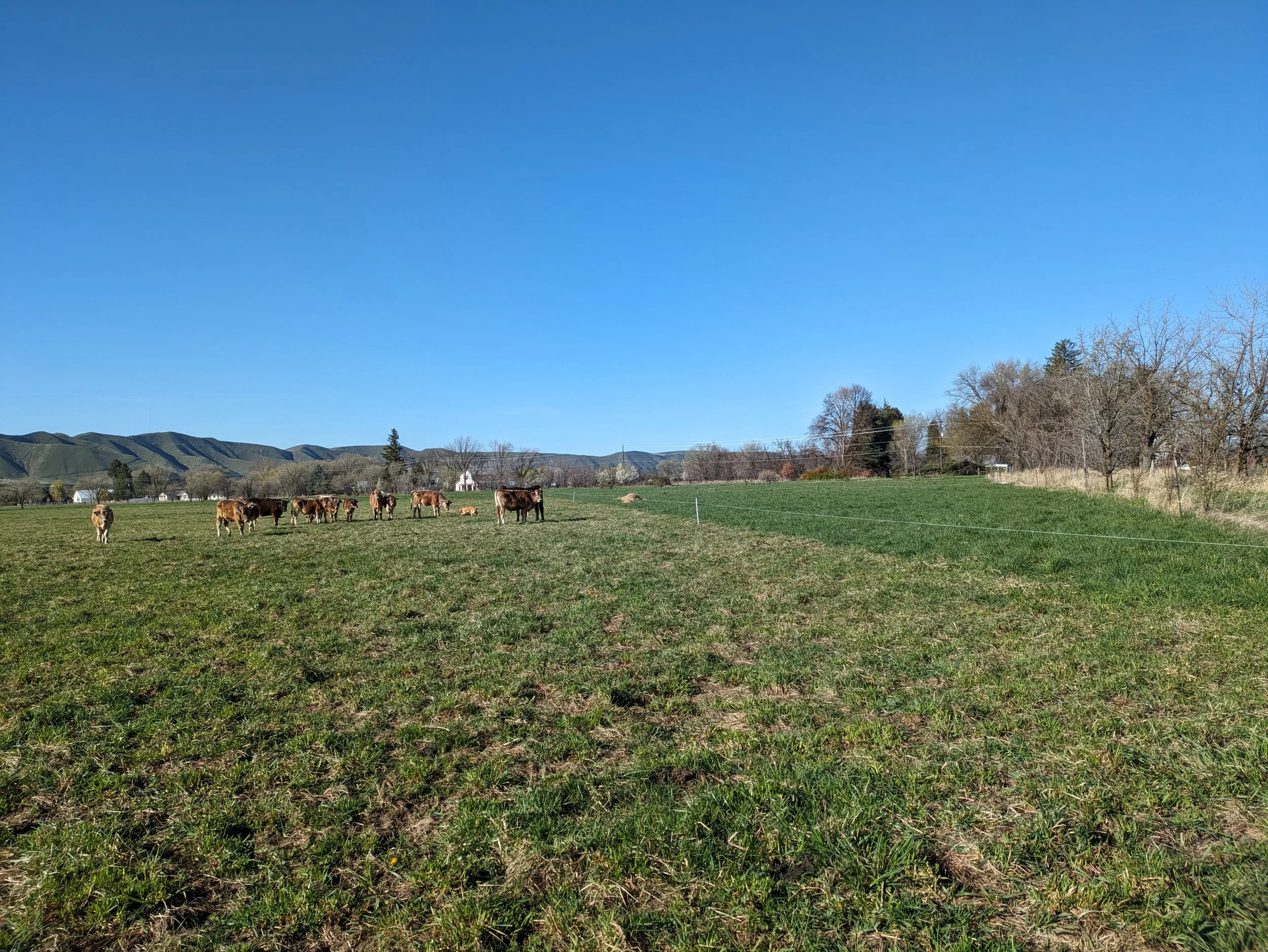
We use temporary fences in the paddocks to give the cows fresh grass every day. Here's the line of where they ate up to the fence, and I'm about to take the temporary fence out for this day's feeding.
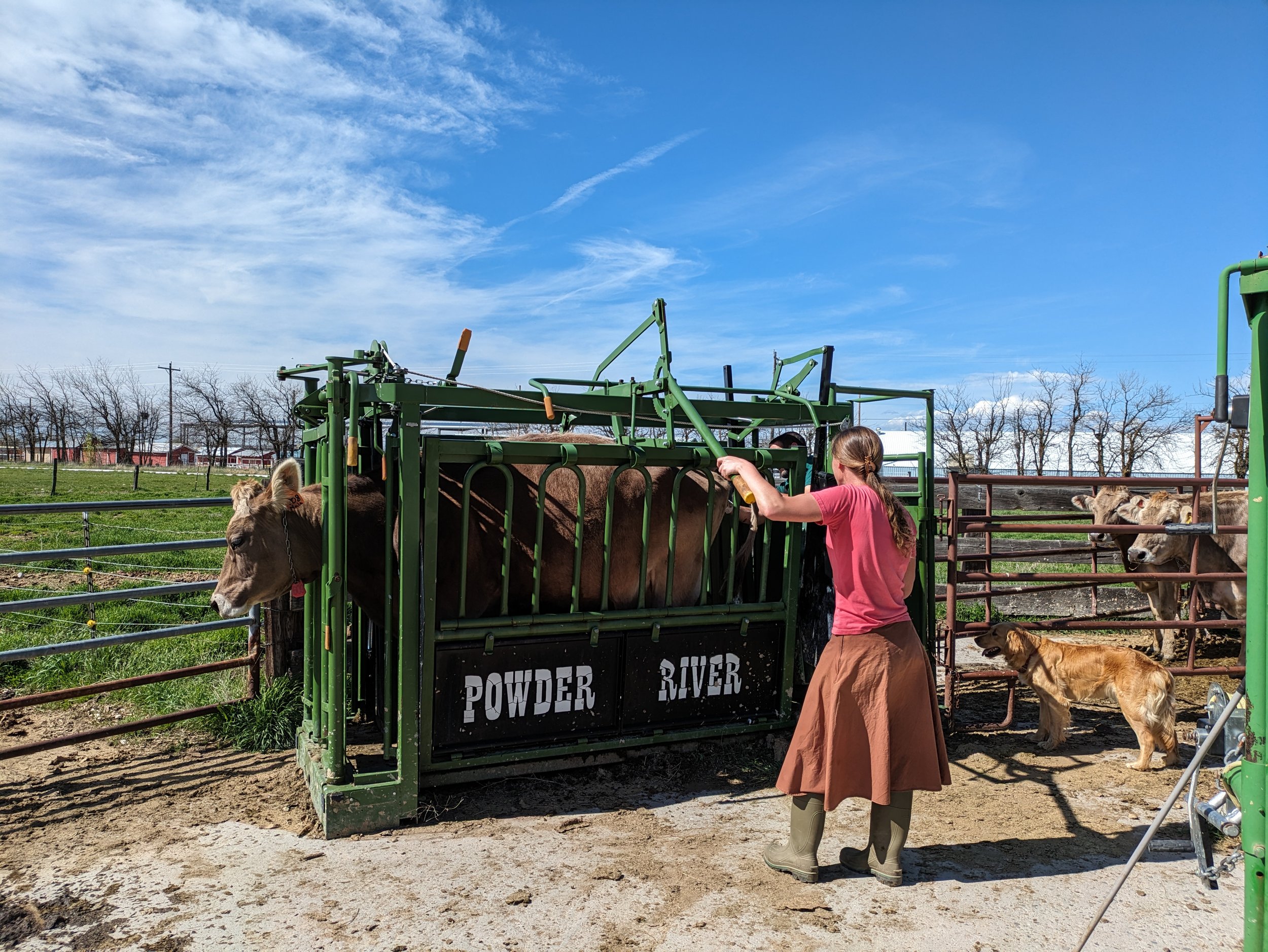
Dorothy and Lia helping me with Vet Peter.

Fueling the tractor with Sean.
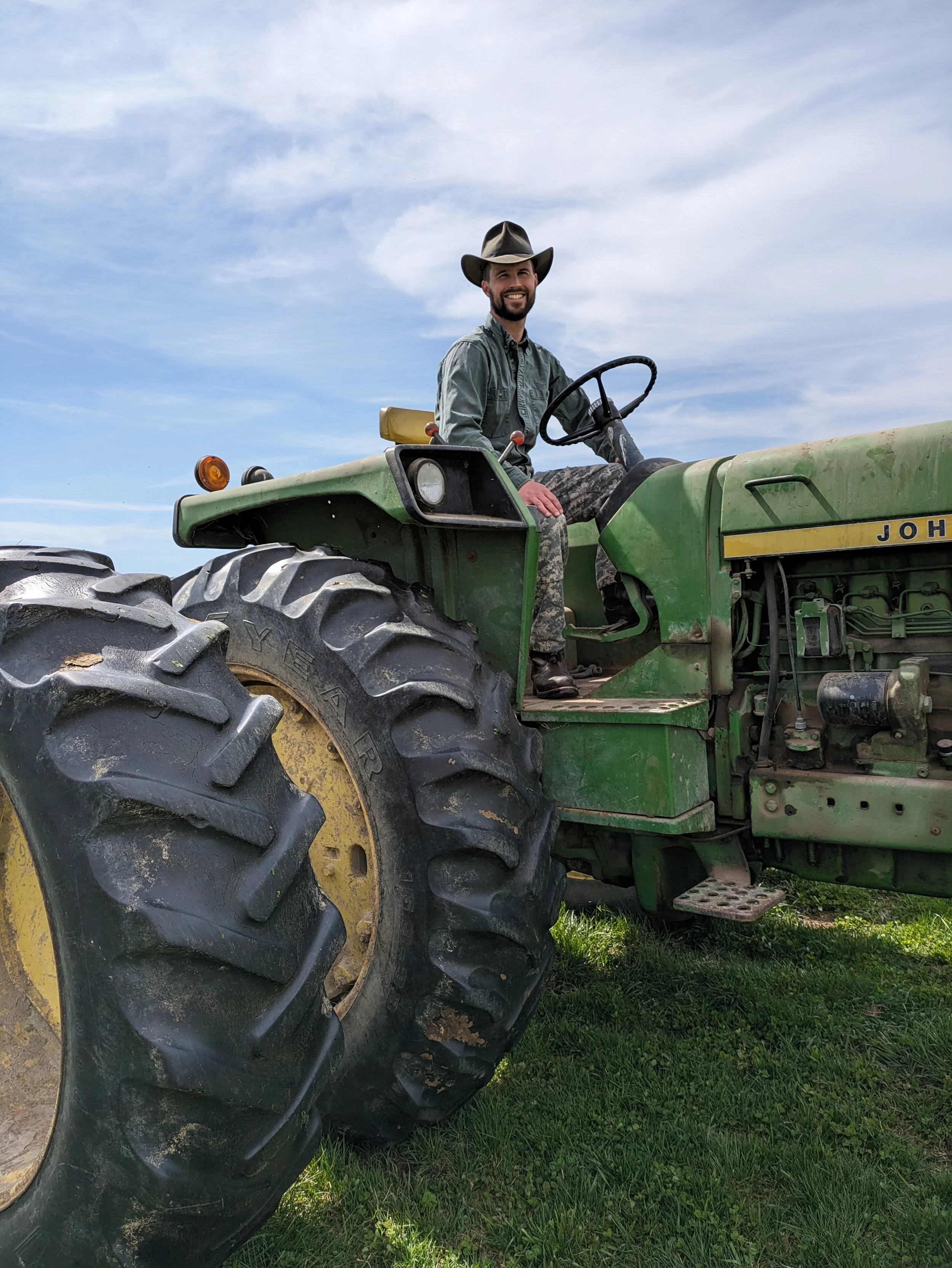
Aaron on the big tractor, heading out to harrow the fields.

Luthien kneeling to graze under the wire. It's really handy when the cows mow the fencelines for me, to keep the grass off of the wires!
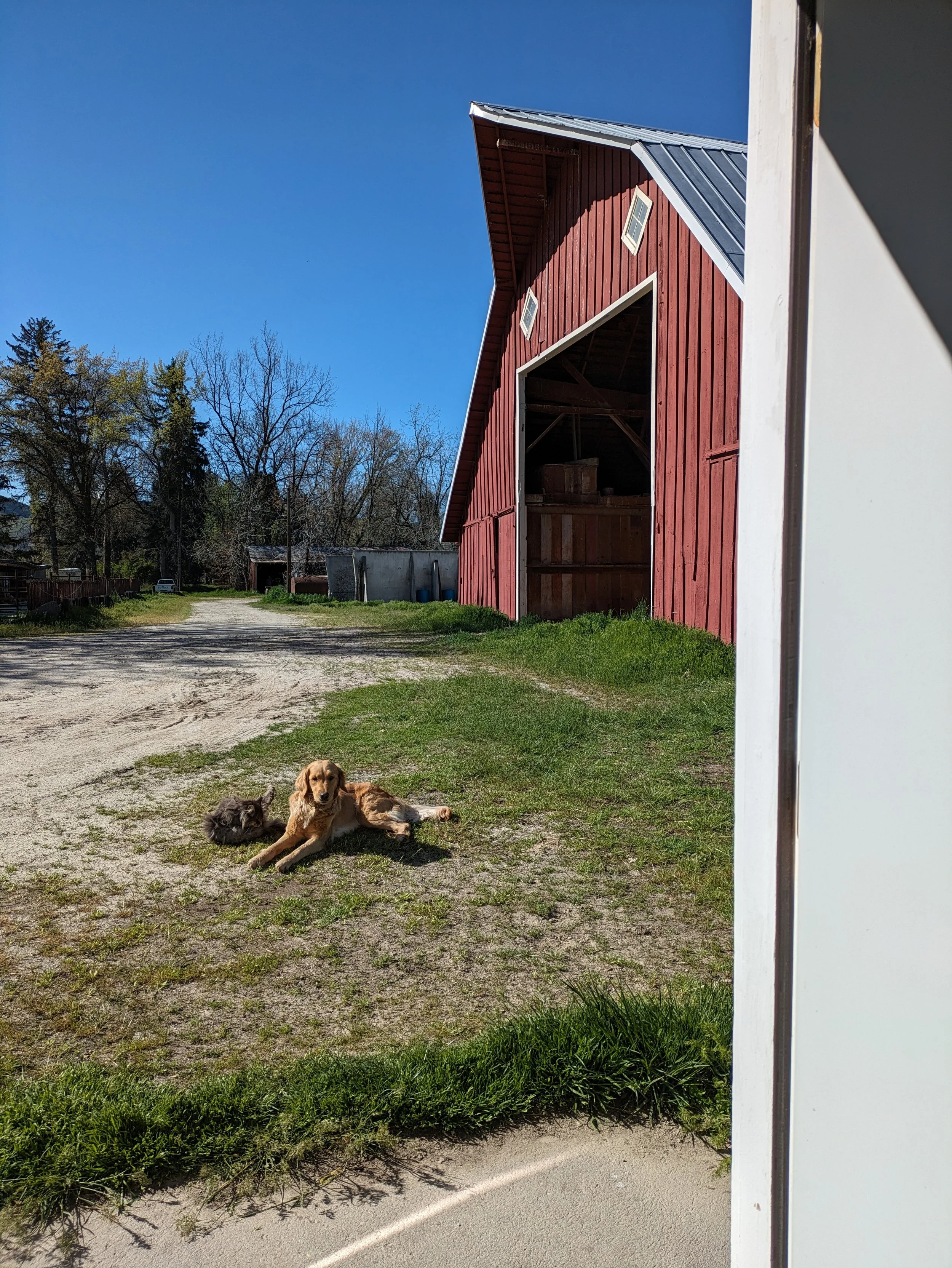
Lia and Blue waiting for me to finish in the milk barn.

Nap time for 6 months old Nick Saint, using Huckleberry as a pillow.

First baby of the year. Aciano from Clover.

Nala... One of our nicest milk cows.

Blue babysitting, and Lia very excited to play but trying to be calm and not bowl the baby over with her enthusiasm.
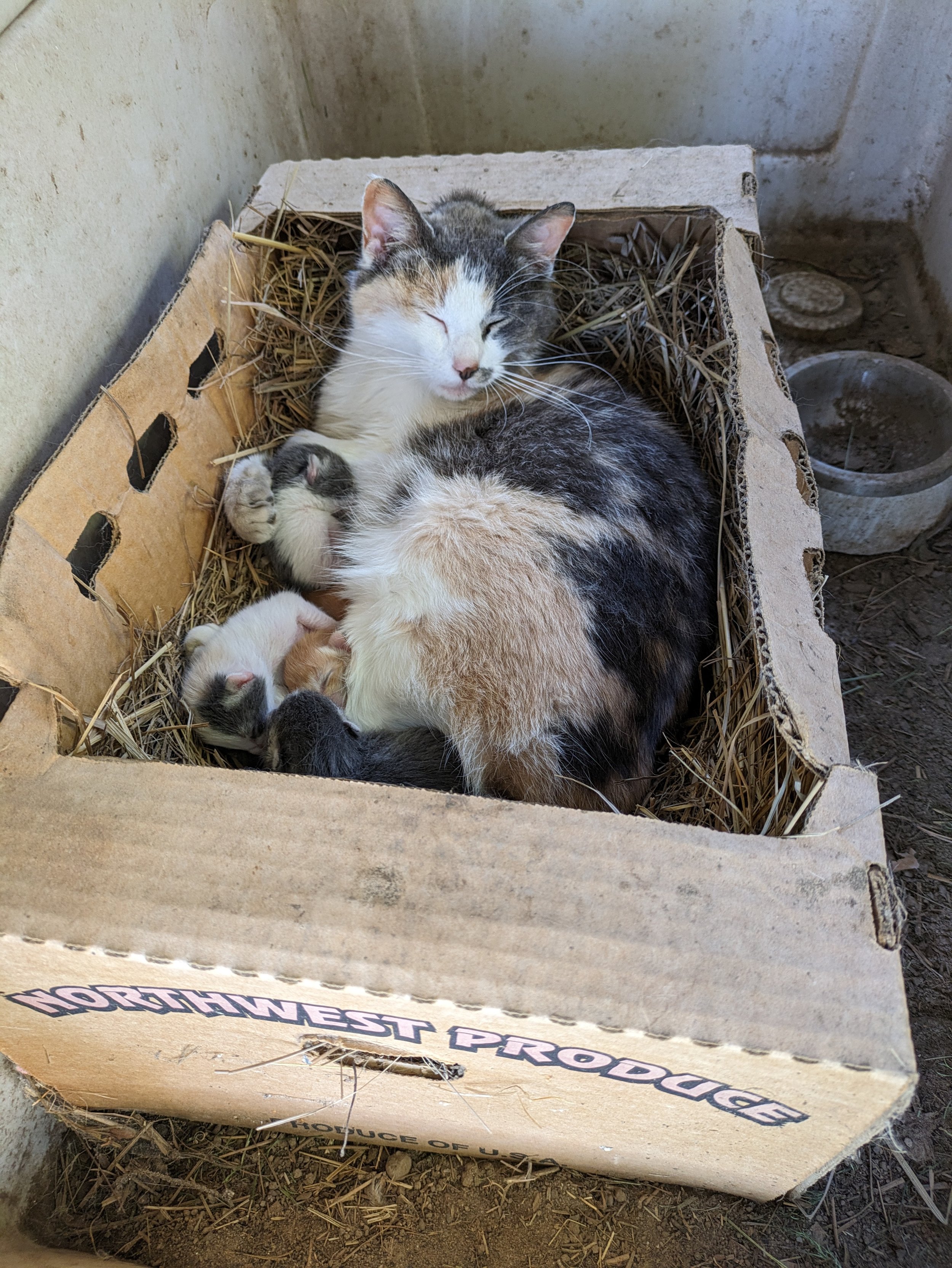
My Julie cat is very happy with four kittens.
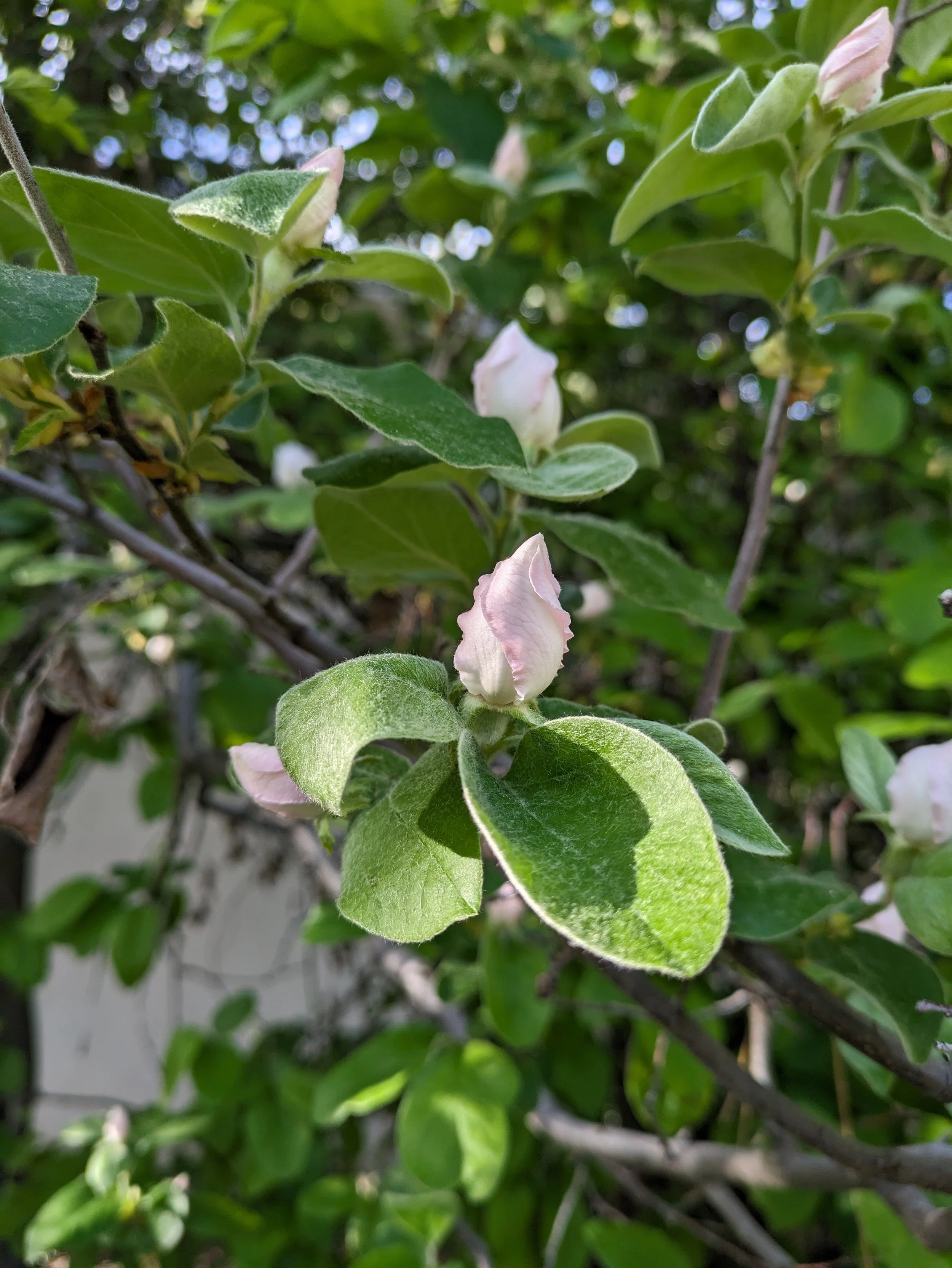
Quince tree in bloom.

from Joseph Mercola, MD
from mercola.com
Synthetic dairy products, including milk made from genetically engineered yeast, are being touted as environmentally friendly health foods that should replace real milk from cows and other animals
Along with missing important micronutrients that are abundant in real milk, fake milk contains compounds that have never before existed in the human diet
Ninety-two mysterious, unknown compounds were detected in the fake milk that don’t exist in real milk
None of these compounds have been tested for safety by the U.S. Food and Drug Administration
Tech oligarchs and venture capitalists are funding most fake food technologies, which gives globalists unprecedented power and control over human health
Synthetic dairy products, including milk made from genetically engineered yeast, are being touted as environmentally friendly health foods that should replace real milk from cows and other animals. But this deceptive green-washing is putting human health at risk, according to Dr. John Fagan, a molecular biologist who worked with the U.S.National Institutes of Health for 8.5 years.
Fagan is cofounder and chief scientist at the Health Research Institute (HRI). He spoke with Errol Schweizer for an episode of his podcast, "The Checkout," detailing concerning new findings about "animal-free" dairy. Along with missing important micronutrients that are abundant in real milk, fake milk — which Fagan and others refer to as a "synbio milk-like product" — contains compounds that have never before existed in the human diet.
"It’s really strikingly different. It just shows that this is not like milk. You can’t say that this is nutritionally like milk in any way," Fagan says.
At Fagan’s HRI, they use "cutting-edge mass spectrometric and molecular genetic approaches to make the invisible visible."
This full-spectrum analysis is capable of revealing so-called "nutritional dark matter," even in foods as mundane as wheat. The fact is, an estimated 85% of the nutritional components in common foods remain unquantified. The health implications of most compounds also remain largely unknown.
New Scientist notes:
"This is also true of individual micronutrients. ‘Consider beta-carotene,’ says[Albert-László Barabási at Harvard Medical School, who coined the term nutritional dark matter] … ‘It tends to be positively associated with heart disease, according to epidemiological studies, but studies adding beta-carotene to the diet do not show health benefits.
One potential reason is that beta-carotene never comes alone in plants; about400 molecules are always present with it. So epidemiology may be detecting the health implications of some other molecule.’ Another probable cause is the effect of the microbiome on dark nutrients, says [FooDB founder David] Wishart.‘Most dark nutrients are chemically transformed by your gut bacteria.
That’s probably why studies on the benefits of different foods give relatively ambiguous results. We don’t properly control for the variation in gut microflora,or our innate metabolism, which means different people get different doses of metabolites from their food.’"
We know even less about the constituents of processed foods and synthetic foods that ignorantly claim to be "equivalents" to whole foods, such as "animal-free meats" or"animal-free milk."
At HRI, Fagan and colleagues are using their full-spectrum analysis for a new category in the food industry — synbio milk-like product. For a bit of backstory, in 1994 Fagan returned close to $614,000 in grant money — and withdrew a request for an additional $1.25 million — to protest genetic engineering and the release of GMOs into the environment.
At the time, he said, "The benefi ts of genetic engineering have been oversold, and thedangers have been underrepresented."
His efforts to advocate for food purity andsafety, nutrition and food security have continued via HRI.
As Fagan explains to Schweizer, one form of synthetic biology involves bacteria, yeast or fungus cells genetically engineered to produce another compound, in this case cow milk proteins. The idea is once you have milk proteins, you can make something from that that supposedly is milk, he says. But Fagan and colleagues used a mass spectrometerto chart the differences in composition between synbio milk-like products, biodynamic milk and organic milk.
While important micronutrients exist in organic and biodynamic milk, they’re missing, or very low in, synbio milk. Further, mysterious, unknown compounds were detected in the fake milk that don’t exist in real milk. Fagan says:
"These are small compounds, and they include things like … fungicide and other really weird compounds ... These are huge amounts of these compounds that are present in synbio milk and not present in real milk. Literally, I counted andthere are 92 different compounds.
Most of them are so uncommon that we don’t even have names for them. And so we can say with good confi dence that these compounds have never been part of the human food supply before, and yet they are the predominant small molecules in synbio milk."
None of these compounds have been tested for safety by the U.S. Food and Drug Administration.
"This product has been put on the market without any safety testing,and your FDA — the FDA that you are paying taxes to watch and make sure your food is safe — looked the other way," Fagan says.
The proteins in synbio milk are also different from proteins in real milk. "Most of the protein that they’re putting into this synbio milk-like product is not milk proteins from cows, but it’s fungus and yeast proteins … we don’t know which, because that’s one of their trade secrets."
In recent years, the idea that we can replace whole foods with synthetic, genetically engineered or lab-grown alternatives that are wholly equivalent to the original food hastaken root. In reality, that’s simply impossible.
How can scientists create equivalence when they don’t even know what 85% or more of the whole food they’re trying to replicate consists of? Common sense will tell you they can’t. It might look, smell and even taste similar, but the micronutrient composition will be entirely different and, as a result, the health effects will be incomparable as well.

In our culture, eating fake food and living a sedentary life indoors is just normal.
The holistic health movement has done good work to move us toward real food and exercise, but what’s often left out of the conversation is SUNLIGHT and the power of our indoor lighting environment.
On a personal note, my health has radically improved over the last year, with the main change I’ve made being getting adequate sunlight, changing my indoor environment, and grounding daily.
Here’s what you need to know:
Morning sunlight balances hormones, improves mood, and keeps the metabolism chugging.
Every cell in the body needs to know what time it is in order to perform optimally. The light entering our eyes provides that information via the suprachiasmatic nucleus, which has a direct connection to the eyes.
Your hormones, your mood, your gut bacteria, and your metabolism all must know what time it is, and sunlight tells your body this.
2. Light from the UVA rise (first 2 hours after sunrise) builds the solar callus, which makes vitamin D synthesis more efficient and reduces the need for sunscreen.
Now that it’s Spring, it’s time to build your solar callus. This is a mostly invisible callus on your skin that prevents you from burning in the Summer and helps you process and utilize UVB light to make vitamin D.
3. UVB in the afternoon is the foundation for full spectrum vitamin D.
After the sun reaches solar noon, there’s move UVB in the sunlight. Exposure to your full body at this time of day will help you make vitamin D.
4. Sunlight sets our circadian clock for sleep. Inadequate sunlight and too much blue light can be a root cause for many sleep disturbances.
Sleep disorders have become so common that there’s a boom in professional sleep coaches. The foundation of sleep is the circadian rhythm, the internal clock that runs every process of the body. To optimize your circadian rhythm, you must:
See morning sunlight in naked eyes
Spend 30 mins outside during the UVA rise (first two hours after sunrise)
Take frequent light breaks throughout the day (looking through a closed window doesn’t count)
Wear blue blockers after sunset and eliminate or reduce sources of blue light in your home
5. Sunlight restores the balance between the sympathetic and parasympathetic branches of the nervous system.
Sunlight is incredibly regulating to our nervous system. If we’re tired, Sunlight gives us energy and stimulation. If we’re in a state of fight-or-flight, the infrared frequencies from the Sun gives a calming, mood-stabilizing effect.
FURTHER RESOURCES

by Courtney Meyerhofer
I’m always looking for ways to eat a high protein breakfast.
This custard is delicious, high in protein, and I can put it in the oven right before I go to bed.
There’s nothing like waking up to breakfast already made.
Enjoy!
INGREDIENTS
4 cups Saint John’s raw organic milk
6 eggs
¼ cup honey, maple syrup, or sugar
Splash of vanilla
Pinch of salt
Optional: 2 scoops collagen or casein protein powder
METHOD
Preheat oven to 475.
Warm milk in a medium pot until steaming.
Whisk together eggs, maple syrup (or other sweetener), vanilla, and salt. Slowly whisk in milk once it’s steaming and optional protein powder.
Pour into a loaf pan or other baking dish.
Bake for 5 minutes.
Turn off the oven and leave the custard in the hot oven for 6-8 hours (or overnight).
SERVING SUGGESTIONS
Maple syrup
Honey
Berries
Cinnamon
Eggs and toast on the side
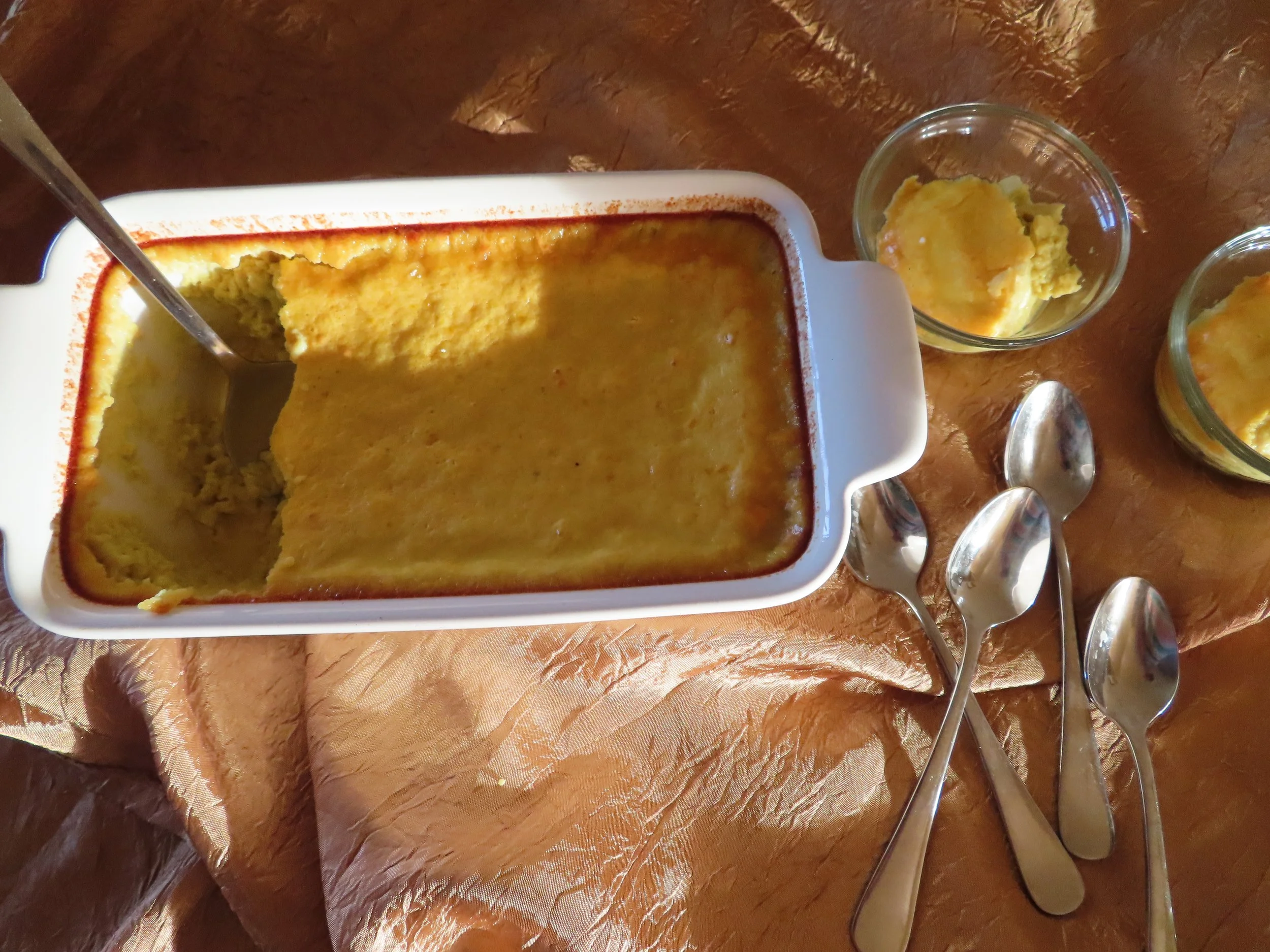
If you try this recipe, tag us on Facebook or Instagram!

by Courtney Meyerhofer
With Spring right around the corner, it’s time to plan the garden.
Here’s why we encourage you to choose local seeds for your garden this year.
Local seeds are from plants well-adapted to your local growing environment.
Seeds saved locally are uniquely prepared to meet our area’s growing conditions.

Plants naturally adapt to their environment, so seeds from local plants are already adapted for the local area’s climate: temperature, humidity, disease, pests, and soil types are all adapted for and this information is stored in the seed itself. (Life is amazing).
Buying local seeds also keeps our money local. This supports local seed saving work and supports local farms who use regenerative practices we can get behind.
Snake River Seeds are uniquely adapted to our region, the Intermountain West. They’re open-pollinated and untreated. We highly recommend them!
March is a wonderful time to order seeds and get started on your backyard garden.
When you get your seeds, take a picture and tag us on Facebook or Instagram. We can’t wait to see what you’re growing!